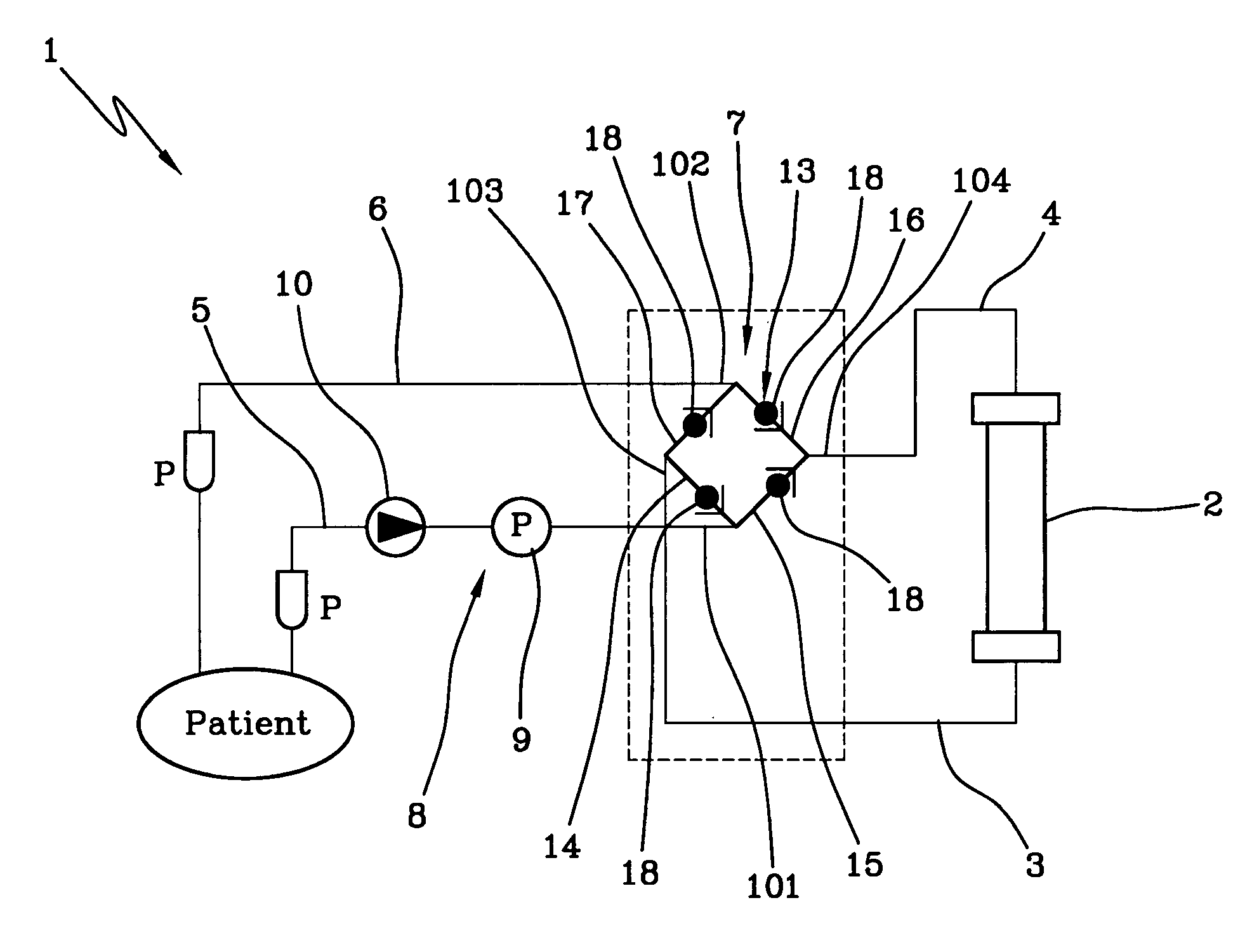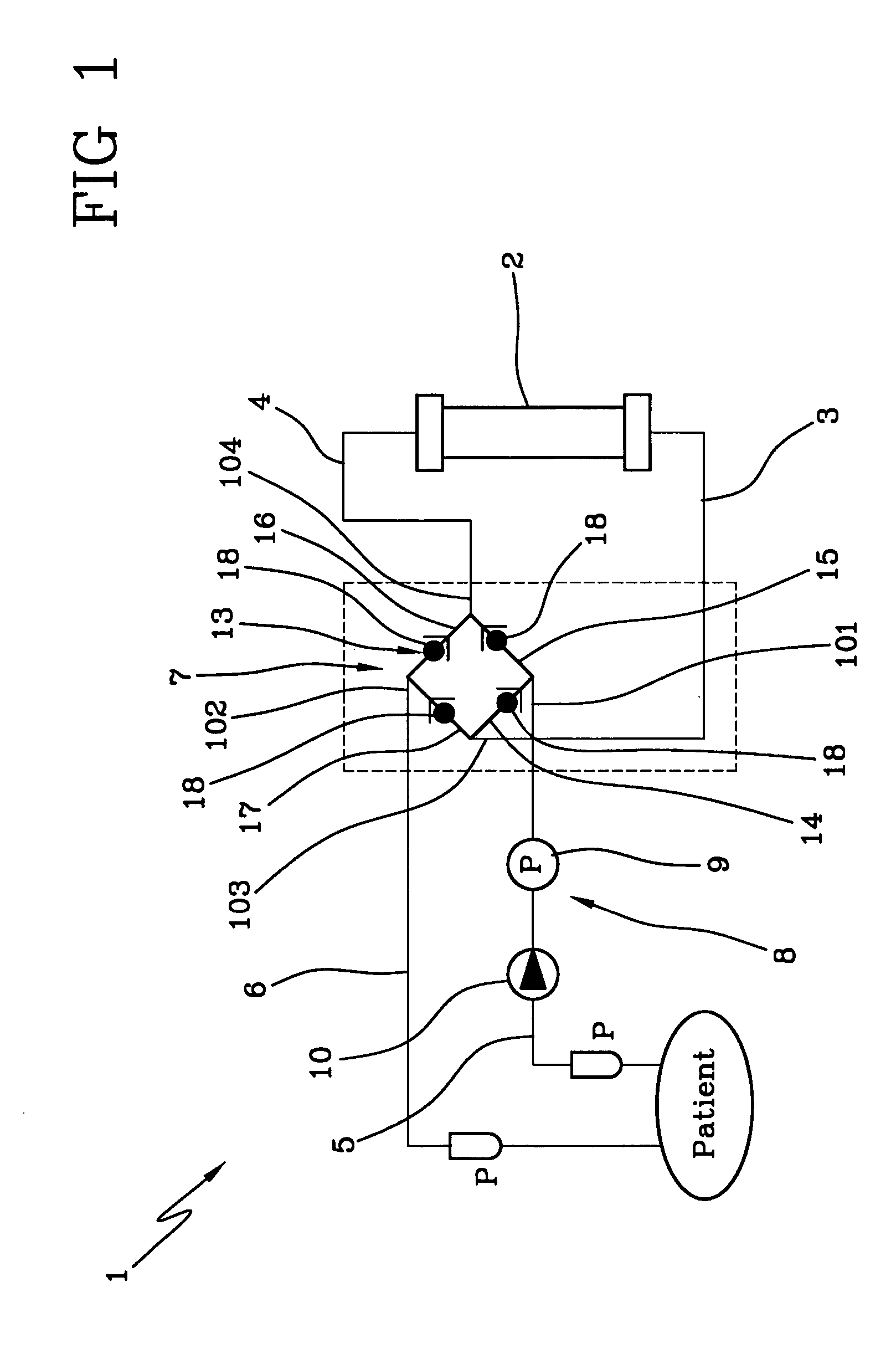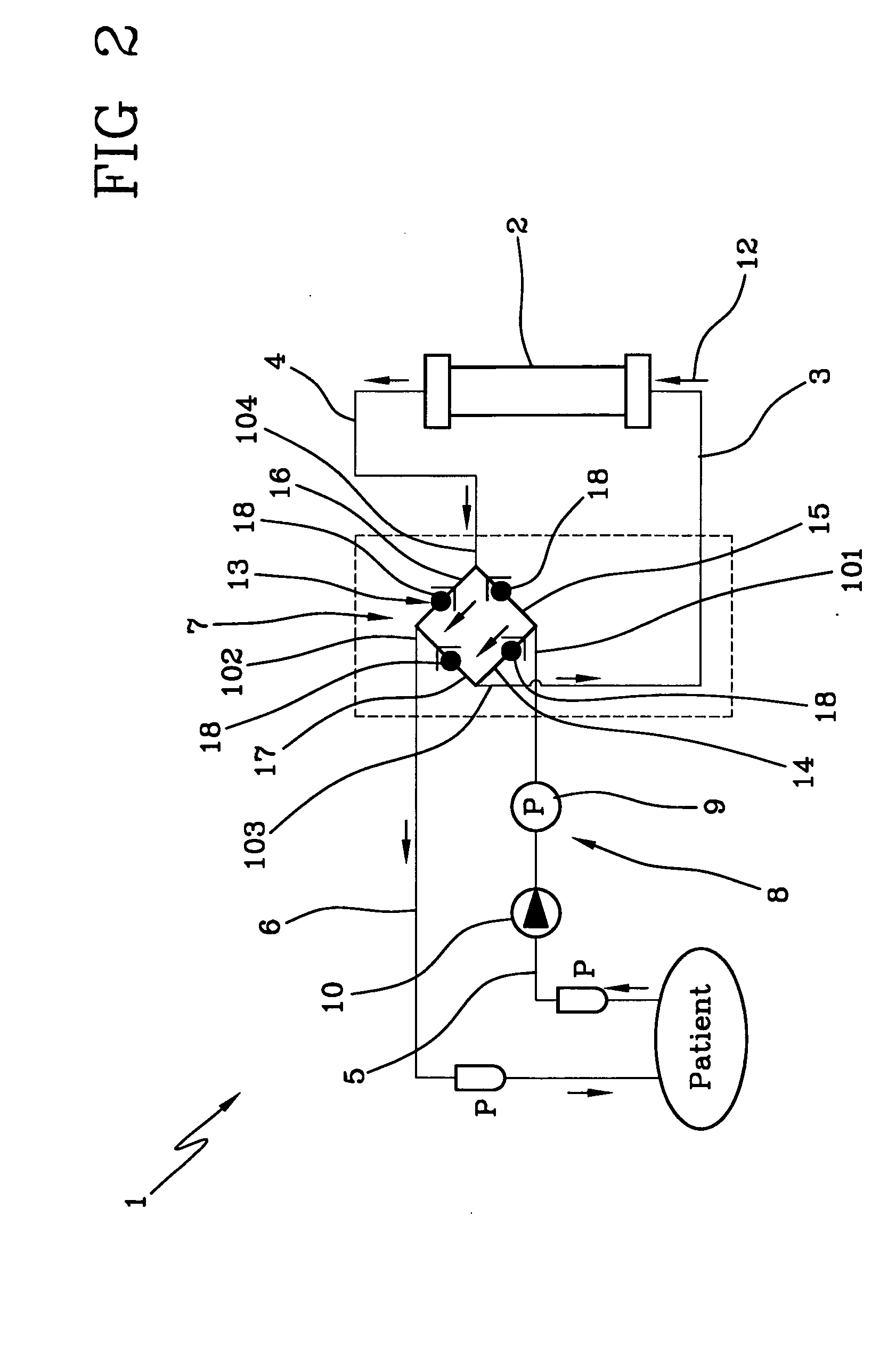Circuit for extracorporeal blood treatment and flow-inverting device utilized therein
a flow-inverting device and extracorporeal blood technology, applied in the direction of moving filter element filters, filtration separation, separation processes, etc., can solve the problems of reducing the performance of vascular access, affecting the reliability of measurement, and affecting the patient's treatment efficiency, so as to achieve optimal counter-current conditions
- Summary
- Abstract
- Description
- Claims
- Application Information
AI Technical Summary
Benefits of technology
Problems solved by technology
Method used
Image
Examples
first embodiment
[0052] In the first embodiment, each of said accesses is connected by appropriate connecting lines 14, 15, 16, 17 to at least two other accesses of the device.
[0053] As viewed from the accompanying FIGS. 1-3, the first connecting line 14 brings the first access 101 into fluid communication with the third access 103, the second connecting line 15 brings the first access 101 into fluid communication with the fourth access 104, the third connecting line 16 brings the second access 102 into fluid communication with the fourth access 104, whereas the fourth connecting line 17 brings the second access 102 into fluid communication with the third access 103.
[0054] In other words and as better clarified in the following when operation of the circuit is explained, the first access 101 can be selectively brought into communication with either the third access 103 or the fourth access 104, whereas the second access 102 can be selectively brought into fluid communication with either the fourth ...
second embodiment
[0061] Obviously for the above purpose can be also taken into consideration members provided with spring-return elements capable of enabling blood passage in one direction alone and only in the presence of overpressures (this is true also with respect to the second embodiment).
[0062] After the above statements from a structural point of view, operation of the circuit for extracorporeal blood treatment (first embodiment) is the following.
[0063] In a first work condition of the movement means 8, the peristaltic pump 9 generates a direct flow (arrow 10 in FIG. 2) in which the blood is drawn from the patient's vascular access through the patient-side artery branch 5 and is then moved towards the flow-inverting device 7 reaching the first access 101.
[0064] Under this situation the flow pressure is of such a nature that opening of the check valve 18 connected to the first connecting line 14 is allowed thereby causing blood passage to the third access 103.
[0065] Simultaneously, the chec...
third embodiment
[0100] Both the second and the flow-inverting device 7 show a blood flow coming from the filter 2 through the unit-side vein branch 4 which is directed, in the first work condition of the movement means 8, towards the second access 102, while it is directed, in the second work condition of the movement means, towards the first access 101.
[0101] In other words the thrust inversion of the peristaltic pump 9 does not affect the blood flow in the fourth access 104 while it inverts blood flow in the first and second accesses 101, 102.
[0102] In other words the second portion 7b comprises means 57 for allowing, in the first work condition, a blood flow from the first access 101 to the main outlet 54 and from the fourth access 104 towards the second access 102 and for allowing, in the second work condition, a blood flow from the second access 102 to the auxiliary outlet 55 and from the fourth access 104 towards the first access 101.
[0103] In the second embodiment said means 57 comprises a...
PUM
| Property | Measurement | Unit |
|---|---|---|
| movement | aaaaa | aaaaa |
| degree of freedom | aaaaa | aaaaa |
| flow pressure | aaaaa | aaaaa |
Abstract
Description
Claims
Application Information
 Login to View More
Login to View More - R&D
- Intellectual Property
- Life Sciences
- Materials
- Tech Scout
- Unparalleled Data Quality
- Higher Quality Content
- 60% Fewer Hallucinations
Browse by: Latest US Patents, China's latest patents, Technical Efficacy Thesaurus, Application Domain, Technology Topic, Popular Technical Reports.
© 2025 PatSnap. All rights reserved.Legal|Privacy policy|Modern Slavery Act Transparency Statement|Sitemap|About US| Contact US: help@patsnap.com



